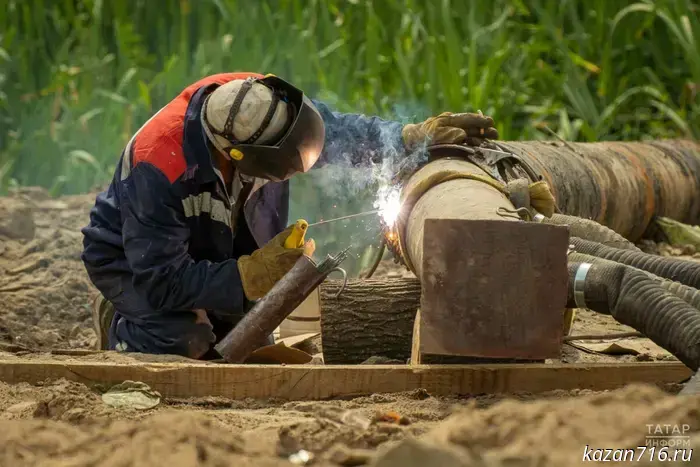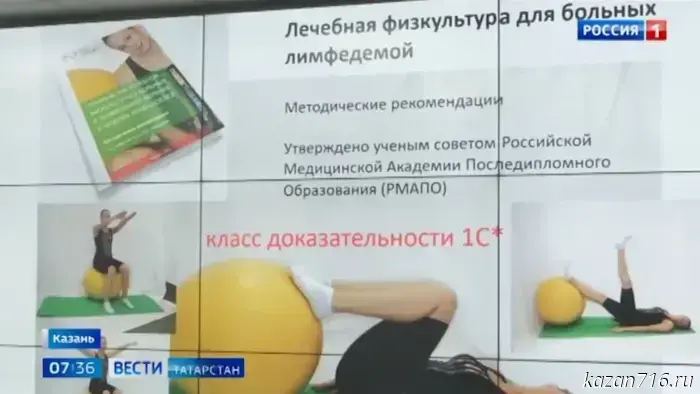How to Protect a Teenager from HIV: Recommendations of GAUZ "Zainsk Central District Hospital"
According to data from Russia’s Ministry of Health, of almost 11,000 children living with HIV in our country, one third are adolescents aged 15 to 17.
Why teenagers are specifically at risk and how parents can protect their child from the human immunodeficiency virus are explained by specialists at GAUZ “Zainsk Central District Hospital.”
Why adolescents are at risk
Twenty years ago HIV was more often transmitted through injectable drug use. Today the situation has changed: up to 70% of new infections occur sexually, most often through heterosexual contact. Adolescence is a time of experimentation and emotional turmoil. Hormonal changes, first crushes, the drive for independence and the desire to try “adult life” often push adolescents toward risky behavior. At the same time, the areas of the brain responsible for control and decision-making are not yet fully developed, making teenagers especially vulnerable. In recent years the share of girls among HIV-infected adolescents has been growing: over 70% of new cases are among them. It is harder for girls to protect themselves due to physiological features, and the first sexual experience is often associated with micro-injuries to the mucous membranes through which the virus can easily enter the body.
“Young mistakes”: why they are dangerous
In addition to sexual risks, HIV can be transmitted through injectable drug use — the probability of infection from a shared syringe reaches 95%. Even “soft” drugs and alcohol become an indirect threat because they reduce self-control and increase the risk of unprotected sex. Unfortunately, many adolescents are ashamed to see a doctor. Under 15 they cannot get an HIV test on their own, and from 15 to 18 the doctor is obliged to inform the parents of the results. This often prevents timely diagnosis and the start of treatment. In addition, adolescents have the lowest adherence to antiretroviral therapy (ART). As a result, mortality from HIV in this age group continues to rise, while overall in the country it is decreasing.
The role of parents: how to protect an adolescent from HIV
1. Talk to your child openly and calmly
School teaches math and biology, but sexual education is the parents’ responsibility. You should begin a conversation about HIV and sexually transmitted infections during puberty — roughly from age 12. Don’t frighten the adolescent; explain using facts. Tell them that HIV is not transmitted through hugs, kisses, mosquito bites or household items, and that infection is possible only through blood or unprotected sex.
2. Debunk myths and harmful stereotypes
Modern adolescents often live under the pressure of old norms: “a man must prove his masculinity,” “a girl must be submissive.” Explain that what’s in fashion now is equality, respect and responsibility. Tell them about the dangers of casual encounters and online acquaintances.
3. Explain the importance of condoms
Adolescents more often worry about unwanted pregnancy, forgetting that a condom is the only protection against HIV and other sexually transmitted infections. Tell your son how to use a condom correctly and why it’s important to check the expiration date. Explain to your daughter that she has the right to say “no” and insist on protection in any relationship.
4. Support access to protective means
Don’t put the adolescent in an awkward position. It’s better to tell them in advance where they can get good-quality condoms without explanations or questions. Such tactfulness will save them from mistakes and shame.
5. Lead by example
A healthy lifestyle, trust in the family, and willingness to discuss difficult topics are the best prevention. By your own example show that caring for one’s health is normal. Take an HIV test together with your child, explaining that this test is not part of standard medical check-ups.
Where to get an HIV test in Zainsk
You can get anonymous and free HIV testing at GAUZ “Zainsk Central District Hospital.” Specialists will provide counseling, explain ways to protect yourself and, if necessary, arrange examinations or treatment. The main protection for an adolescent against HIV is your attention, trust and openness. Let your child know that in any situation they can turn to you for help without fear of judgment. After all, caring for health is not control but an expression of love.
Based on materials from the Ministry of Health of the Russian Federation
Aigul Yarullina
More news about the event:
How to protect an adolescent from HIV: recommendations of GAUZ “Zainsk Central District Hospital”
According to data from Russia’s Ministry of Health, of almost 11,000 children living with HIV in our country, one third are adolescents aged 15 to 17. 16:48 02.11.2025 News of Zainsk - Zainsk
How to protect an adolescent from HIV: recommendations of GAUZ “Zainsk Central District Hospital”
According to data from Russia’s Ministry of Health, of almost 11,000 children living with HIV in our country, one third are adolescents aged 15 to 17. 16:48 02.11.2025 Zainsk-Inform - Zainsk
Другие Новости Казани (Казань716)
 Welders' Day was officially established in Russia.
The Government of Russia established a new professional holiday – Welder's Day, which will be celebrated at the end of May. 02.11.2025. Tatar-Inform News Agency. Republic of Tatarstan. Kazan.
Welders' Day was officially established in Russia.
The Government of Russia established a new professional holiday – Welder's Day, which will be celebrated at the end of May. 02.11.2025. Tatar-Inform News Agency. Republic of Tatarstan. Kazan.
 In Tatarstan, meetings are held for people who have overcome cancer.
More than 15 percent of those examined were newly diagnosed with a disease. There were also patients who required hospitalization. 02.11.2025. GTRK Tatarstan. Republic of Tatarstan. Kazan.
In Tatarstan, meetings are held for people who have overcome cancer.
More than 15 percent of those examined were newly diagnosed with a disease. There were also patients who required hospitalization. 02.11.2025. GTRK Tatarstan. Republic of Tatarstan. Kazan.
 This year, the winter in Tatarstan will be snowy.
According to Kazan Federal University (KFU) professor Yuri Perevedentsev, the upcoming winter in Tatarstan will be warm and snowy due to the influence of the North Atlantic. 02.11.2025. GTRK Tatarstan. Republic of Tatarstan. Kazan.
This year, the winter in Tatarstan will be snowy.
According to Kazan Federal University (KFU) professor Yuri Perevedentsev, the upcoming winter in Tatarstan will be warm and snowy due to the influence of the North Atlantic. 02.11.2025. GTRK Tatarstan. Republic of Tatarstan. Kazan.
 Alfiya Kogogina: Our common task is to create an environment for young people so that everyone has the opportunity to gain knowledge, support and resources to implement their business ideas.
An in-person stage of the accelerator was held in Moscow for the winners and laureates of the federal competition for young entrepreneurs "Create NASHE". November 1, 2025. Agryzsky District. Republic of Tatarstan. Agryz.
02 November 2025, 10:19 Incidents
The Volga Transport Prosecutor's Office has launched an inspection to verify compliance with the rights of air passengers in connection with flight delays that occurred on November 2 at the airports of Nizhny Novgorod, Kazan, Samara, Ulyanovsk and Ufa, the agency's press service said.
Thus, three flights were delayed at Chkalov Nizhny Novgorod Airport: the flight to Ulyanovsk was moved from 5:00 to 9:30, to Orenburg — from 8:05 to 13:20, and to Yekaterinburg — from 19:15 to 23:35. The disruptions were caused by restrictions on the use of airspace.
Prosecutor's office staff are checking whether passengers have been provided with everything necessary in accordance with federal aviation regulations. This concerns the provision of meals, drinks, rest opportunities and other assistance provided for lengthy flight delays.
If violations are found, the agency will take prosecutorial response measures. In addition, if necessary, mobile reception points will be deployed at the airports to promptly receive appeals from citizens.
It is worth noting that the "Kover" plan was not activated at Nizhny Novgorod Airport last night.
Earlier, one airline was already held administratively liable for inadequate servicing of passengers on flights delayed in May.
NIA "Nizhny Novgorod" has a Telegram channel. Subscribe to stay informed about major events, exclusive content and timely information.
Copyright © 1999–2025 NIA "Nizhny Novgorod". When republishing, a hyperlink to NIA "Nizhny Novgorod" is mandatory. This resource may contain 18+ materials.
Ivan Laptev passed away at the age of 92 — an outstanding journalist and public figure who headed the editorial office of the newspaper Izvestia from 1984 to 1990. 02.11.2025. Kazan Vedomosti. Republic of Tatarstan. Kazan.
Alfiya Kogogina: Our common task is to create an environment for young people so that everyone has the opportunity to gain knowledge, support and resources to implement their business ideas.
An in-person stage of the accelerator was held in Moscow for the winners and laureates of the federal competition for young entrepreneurs "Create NASHE". November 1, 2025. Agryzsky District. Republic of Tatarstan. Agryz.
02 November 2025, 10:19 Incidents
The Volga Transport Prosecutor's Office has launched an inspection to verify compliance with the rights of air passengers in connection with flight delays that occurred on November 2 at the airports of Nizhny Novgorod, Kazan, Samara, Ulyanovsk and Ufa, the agency's press service said.
Thus, three flights were delayed at Chkalov Nizhny Novgorod Airport: the flight to Ulyanovsk was moved from 5:00 to 9:30, to Orenburg — from 8:05 to 13:20, and to Yekaterinburg — from 19:15 to 23:35. The disruptions were caused by restrictions on the use of airspace.
Prosecutor's office staff are checking whether passengers have been provided with everything necessary in accordance with federal aviation regulations. This concerns the provision of meals, drinks, rest opportunities and other assistance provided for lengthy flight delays.
If violations are found, the agency will take prosecutorial response measures. In addition, if necessary, mobile reception points will be deployed at the airports to promptly receive appeals from citizens.
It is worth noting that the "Kover" plan was not activated at Nizhny Novgorod Airport last night.
Earlier, one airline was already held administratively liable for inadequate servicing of passengers on flights delayed in May.
NIA "Nizhny Novgorod" has a Telegram channel. Subscribe to stay informed about major events, exclusive content and timely information.
Copyright © 1999–2025 NIA "Nizhny Novgorod". When republishing, a hyperlink to NIA "Nizhny Novgorod" is mandatory. This resource may contain 18+ materials.
Ivan Laptev passed away at the age of 92 — an outstanding journalist and public figure who headed the editorial office of the newspaper Izvestia from 1984 to 1990. 02.11.2025. Kazan Vedomosti. Republic of Tatarstan. Kazan.
How to Protect a Teenager from HIV: Recommendations of GAUZ "Zainsk Central District Hospital"
According to data from the Russian Ministry of Health, among almost 11,000 children living with HIV in our country, a third are adolescents aged 15 to 17. November 2, 2025. Zainsk-Inform. Republic of Tatarstan. Zainsk.
